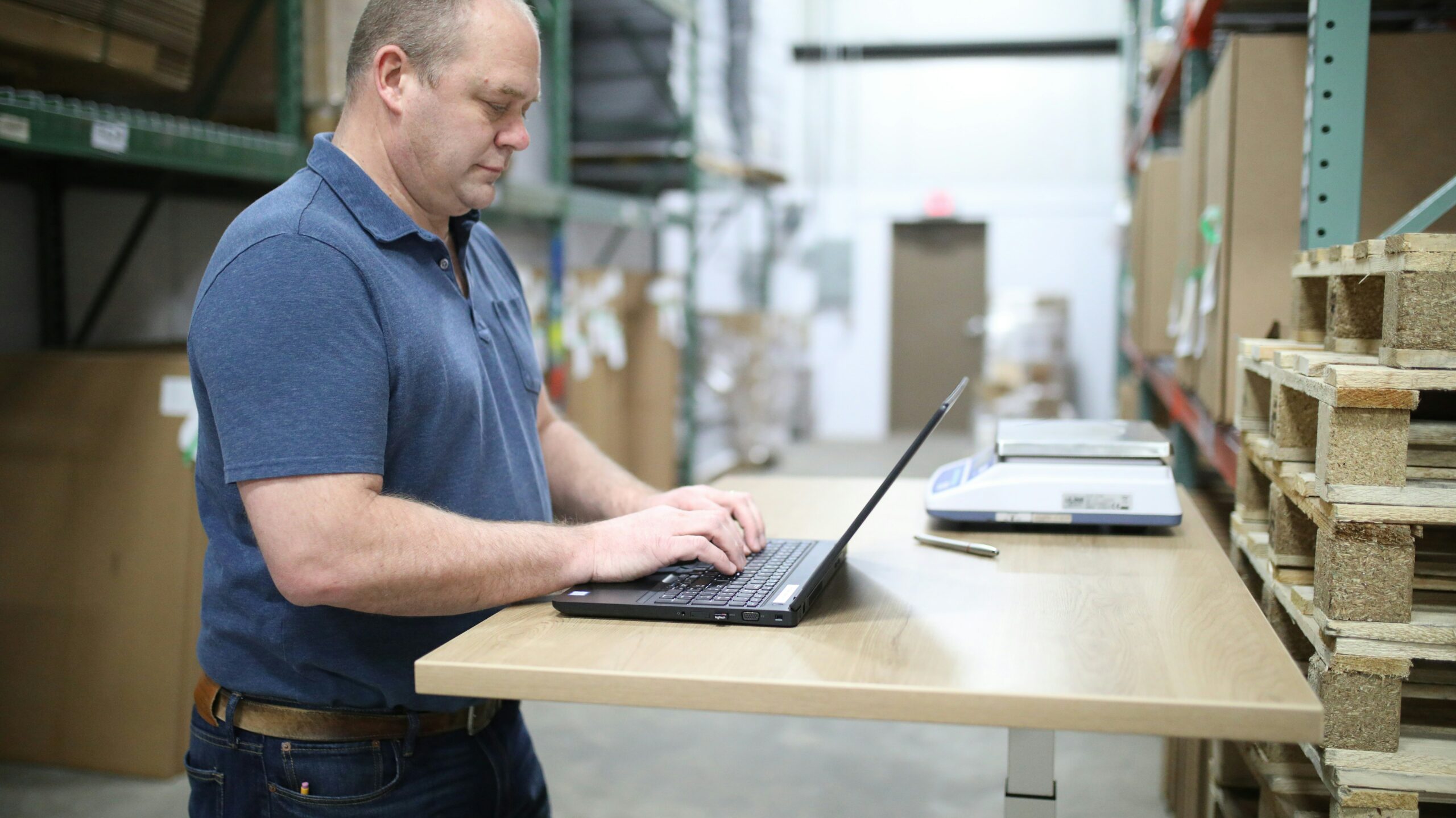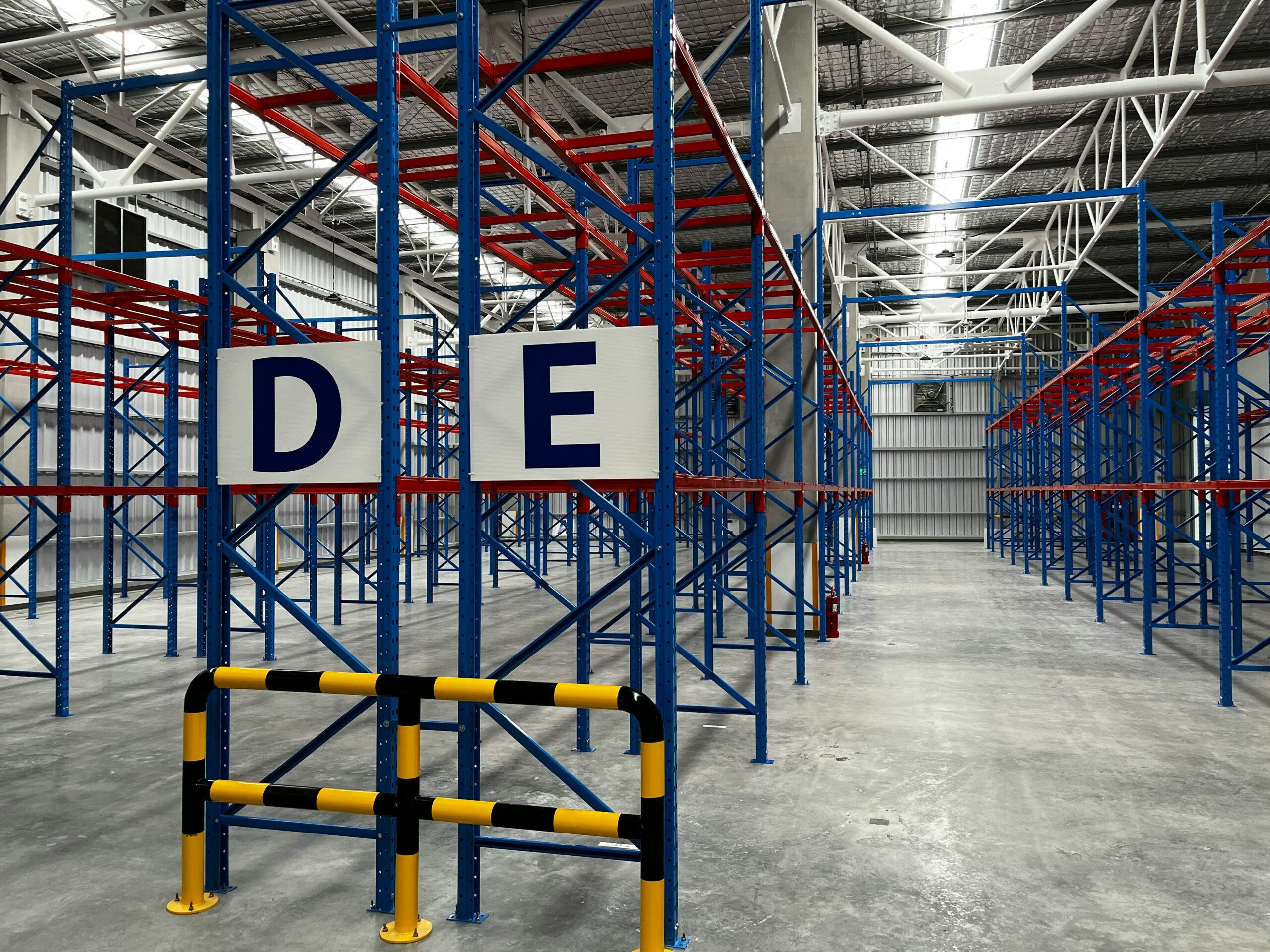How Often Should Racking Be Inspected?

When it comes to warehousing and logistics, safety isn’t just important, it’s paramount. A racking inspection is a vital process that proactively measures risks and hazards, and ensures compliance with health and safety legislation.
This guide will explore exactly what a warehouse racking inspection is, what is included and how often you need to complete one.
Guide contents:
- What Is A Racking Inspection?
- How Often Should Racking Be Inspected?
- Racking Regulations
- What Is Included In A Racking Inspection
- Racking Inspection Results
- Who Completes A Racking Inspection?
- Why Do You Need A Racking Inspection?
What Is A Racking Inspection?
A racking inspection is a thorough check of any storage equipment used in warehouses and similar facilities.
Under the Provision and Use of Work Equipment Regulations 1998 (PUWER), racking inspections are a legal requirement. Such inspections are essential for businesses that rely on storage systems, such as retail, logistics, and manufacturing. They ensure that structures like pallet racking and cantilever racking are safe and meet industry standards set out by the Health And Safety Executive (HSE). Racking inspection regulations emphasise the importance of maintaining safe equipment in the workplace to promote employee safety.
How Often Should Racking Be Inspected?

Racking inspections should be completed annually by a qualified expert to maintain safety standards. However, more frequent checks are also advised.
Those working in environments where racking is commonplace can expect to undertake racking inspections as per the following schedule:
1. Continuous Monitoring
On-site staff should participate in continuous racking inspections, ideally daily, as this can catch any immediate issues before they escalate. They should keep an eye out for:
- Visible damage, such as dents or bends in the racks
- Overloading to ensure weight limits are not exceeded
- Proper organisation and arranging of items to prevent objects falling
2. Weekly Checks
Weekly checks should be more thorough than daily ones, and must be conducted by a competent person or a Person Responsible for Racking Safety (PRRS). They should focus on structural integrity and compliance with safety standards, and will entail:
- A detailed visual inspection to look for any signs of wear or corrosion
- Weight distribution checks to make sure loads are evenly distributed across the racking
- Evaluating safety equipment; for example, the functionality of protective barriers
3. Annual Inspections
An annual racking inspection is a formal assessment and is mandatory under industry regulations by HSE. Racking inspection recommendations state that this should be done by an external third party and will involve:
- A comprehensive evaluation and full examination of the entire racking system
- An expert analysis conducted by a qualified or independent racking inspector
- Detailed reports with documentation of findings, including any required repairs or adjustments
Racking Regulations
When purchasing or installing racking systems, they need to be designed and manufactured according to specific industry standards. These standards are the SEMA Design Codes and European Code EN 15512.
SEMA Design Codes
- Developed by the Storage Equipment Manufacturers Association (SEMA), these codes set industry standards for racking installations
- They provide detailed guidance on design, testing, and use of storage equipment
European Code EN 15512
- This code provides criteria for the design of steel static storage systems
- It ensures the strength and stability of pallet racking, cantilever racking, and mezzanine floors
Once racking is in place, the owner is then responsible for ongoing maintenance and safety, as per PUWER Regulations 6, which specifies when racking inspections should be carried out.
What Is Included In A Racking Inspection?

A racking inspection by a trained professional will cover:
- Structural Integrity – Check beams and uprights for damage or corrosion
- Load capacity labels – Ensure labels are visible and accurate
- Alignment – Verify that racks are straight and not leaning
- Floor fixings – Ensure that racks are securely anchored to the floor
- Beam connectors – Inspect for any signs of wear or damage
- Safety accessories – Assess the condition of barriers, mesh decks, and protection guards
- General housekeeping – Look for debris or items that could cause hazards
Racking Inspection Results
A qualified inspector will then use a traffic light system to report the inspection results, with each colour being assigned a specific meaning and subsequent action.
Red
Status: Red indicates a serious problem and any identified damage in this category requires immediate action. Racks marked red should not be used until repaired. This typically covers critical structural damages or missing support components.
Action: Racking must be immediately repaired or decommissioned.
Amber
Status: Amber signals caution, for issues that are not urgent but do need attention soon. This might include minor dents or slight misalignment.
Action: The responsible person should schedule repairs within a reasonable time frame to prevent further deterioration. With regular racking inspections, any amber problems will not escalate to red.
Green
Status: Green means everything is in good condition and no immediate action is required. Racks comply with legal requirements and industry standards.
Action: You should still continue regular inspections to ensure safety and prolong the lifespan of storage equipment.
Who Completes A Racking Inspection?
Hiring an expert, such as a SEMA-approved racking inspector, helps meet all industry standards. SEMA is the Storage Equipment Manufacturers’ Association, and is recognised for setting high safety standards in storage systems.
These third-party inspectors are trained and qualified to conduct thorough checks, providing unbiased and detailed inspection reports. The expert nature of these inspections identifies problems that an untrained eye might miss, so warehouse owners stay aware of potential racking issues.
Here are some reasons to choose a qualified inspector:
- Industry knowledge – Experts understand all legal requirements and can offer solutions
- Experience – Approved inspectors have a track record of inspecting various racking systems
- Detailed reports – They provide clear and actionable reports
In addition, regular internal inspections by staff are also important. Training your team to perform routine checks can prevent small issues from becoming larger problems.
Why Do You Need A Racking Inspection?
All businesses must adhere to health and safety laws set out by HSE. Racking inspection regulations are just one area that organisations need to comply with. As well as ensuring you adhere to the relevant legislation, keeping up with warehouse racking inspections means optimal safety conditions for staff. Below are the key reasons why regular inspections are crucial:
- Safety – Routine checks can identify potential hazards, preventing accidents in storage areas
- Compliance – Regular inspections help meet health and safety regulations and industry standards
- Prevention – Early detection of wear and tear can prevent racks from failing, which could cause costly damage to goods and injuries to employees
- Efficiency – Ensuring racks are in good condition helps optimise storage capacity and workflow
- Improvements – Detailed reports give warehouse owners valuable insights to help them improve in the future
Warehouse Safety From Rhino Safety
Rhino Safety can help you to streamline your warehouse health and safety processes and make sure you are ticking all the boxes. From initial health and safety audits to risk assessments that identify all potential hazards, we support businesses in every industry across the UK and globally.
Talk to our experts today to discover the benefits of using our health and safety services, and how we can tailor our solutions to suit your business goals.
